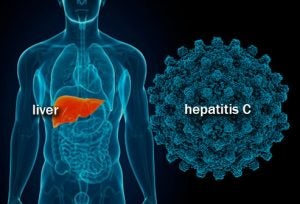 In recent months, the spotlight has been trained on the alarming opioid crisis and even the President of the United States declaring it to be a health emergency after a report stated that drug overdoses killed approximately 64,000 people in the United States in 2016. However, very little has been said on silent killers that occurs because of needle exchange behavior which occurs with opioid abuse. Commonly associated with such practices is HIV but another one of such diseases is Hepatitis C.
In recent months, the spotlight has been trained on the alarming opioid crisis and even the President of the United States declaring it to be a health emergency after a report stated that drug overdoses killed approximately 64,000 people in the United States in 2016. However, very little has been said on silent killers that occurs because of needle exchange behavior which occurs with opioid abuse. Commonly associated with such practices is HIV but another one of such diseases is Hepatitis C.
Hepatitis C is a contagious liver disease caused by the Hepatitis C virus which affects an estimated 2.7 million to as high as 5 million people in the United States. It can manifest as a mild acute illness occurring within the first 6 months of exposure to the virus. Approximately 15-25% of these infected will recover from this infection but a majority would progress to chronic Hepatitis C.
A most alarming fact of this type infection is that approximately 70-80% of people with Acute Hepatitis C will manifest will be asymptomatic or be without symptoms. Moreover, chronic hepatitis C is asymptomatic as well thus leaving a person with no clue that he has already contracted a potentially fatal illness.
Chronic hepatitis C is a leading cause of chronic liver disease such as cirrhosis and liver cancer and nationally accounts for more than 30% of liver transplant indications among adults. These complications once in the end stage liver disease stage costs up to $59,995 annually in 2011 USD and which is 2.5 times more expensive than the early stages of stages of chronic liver disease. The economic costs are staggering given the number of people suffering from the disease.
Approximately three-fourths of patients suffering from the disease are adults born from 1945 to 1965 who have had blood transfusions, dialysis or organ transplants prior to 1992 when testing for the virus began and those who used injection drugs or used intranasal cocaine. However, men and women in the 20-29 age group has also been noted to have increasing number of infections. In California, rates of 55 percent for men and 37 percent among women in that age group has been noted. These data are consistent with increases in hepatitis C infection throughout the country.
These facts illustrate the importance of early diagnosis of hepatitis C positive individuals before their illness progresses to the more debilitating chronic liver disease. Of particular concern is the baby boomers which could potentially been infected for decades without symptoms ever coming about. Early diagnosis is of even greater importance now since the advent of new antiviral therapy that represents a significant improvement over earlier treatment protocols and has shown outcomes consistent with cure after treatment of approximately twelve weeks.
Despite these advances, hepatitis C is severely underfunded both federally and states-wide. Certain state legislatures like California have allocated funds for pilot projects to curb the rising tide of infections but these remain insufficient to dent the quandary of increasing hepatitis C infection.
Targeted mechanisms are needed for different at-risk populations so that there is increase awareness and so that behaviors may be changed to prevent the further spread of this once deadly illness. Such mechanisms can take the form of syringe service programs which exchanges used syringes for new ones. However, these kinds of programs must be implemented without the associated threat of incarceration for possession of illicit substances. Furthermore, capacity building of primary care facilities and health personnel is also essential so that vulnerable segments of the population can have access to testing and effective treatment.
The necessary first step for all these is the express recognition of the States and Federal government of the Hepatitis C “emergency”.
Daniel Lising is a research assistant for the O’Neill Institute’s Hepatitis Policy Project. Daniel is an LLM in Global Health student at Georgetown University Law Center.



